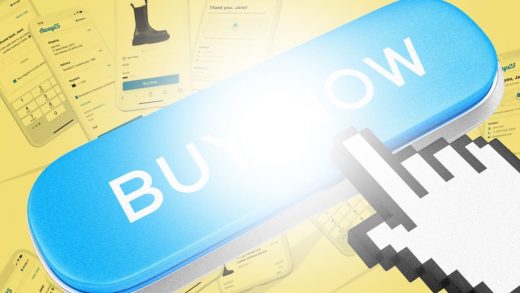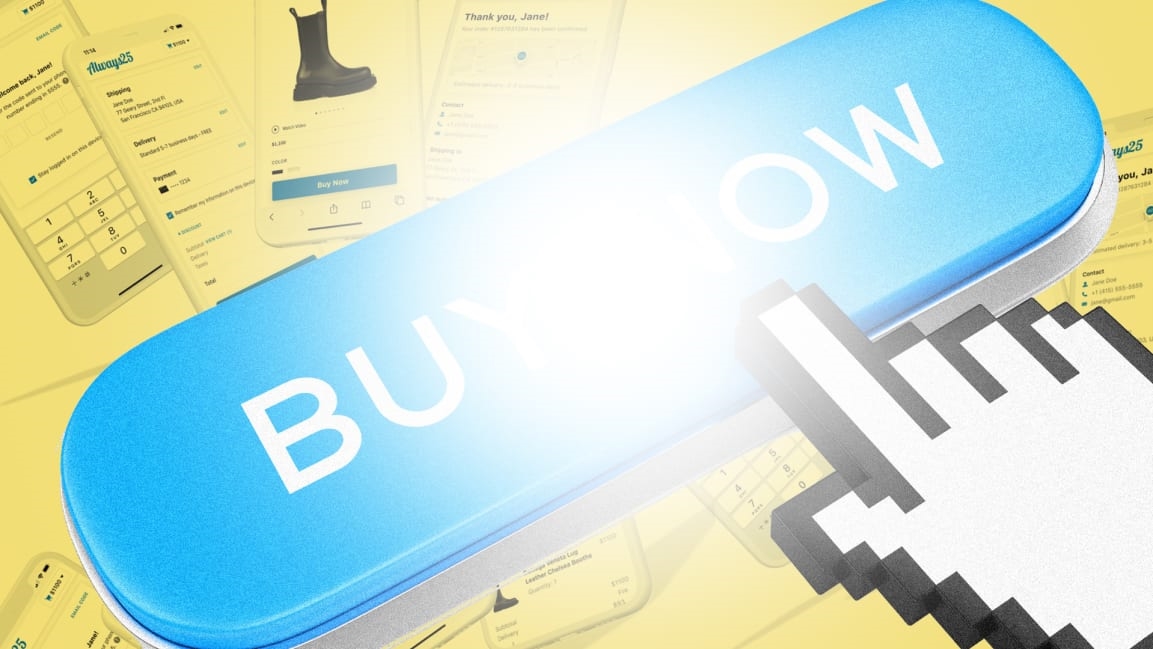The online checkout page is broken. These 3 companies are fixing it
There’s no way around it: The holiday shopping season is going to be a mess.
From inflation driving up the price of goods to massive disruption in the supply chain causing shortages and delays, the grim forecast that analysts have been warning consumers and retailers about for months is, indeed, nigh.
While there’s little that can be done immediately about a total meltdown in logistics and an economy still reeling from the pandemic, there’s another pain point in the online shopping experience that’s less complicated to fix.
You may have noticed how cluttered your online checkout process has become over the past few years: having to create an account to complete your purchase, a dizzying array of payment options, pop-ups for warranties and insurance that cost more than the item you’re buying. Sure, some checkout add-ons may be beneficial to consumers, but only if properly executed. Otherwise, they exacerbate the longstanding issue of cart abandonment, i.e. customers adding items to their digital cart but not completing the transaction.
A recent study from Stripe found that 19% of customers would abandon a purchase if it took more than a minute to check out—and 56% of customers said it takes three minutes on average to complete a purchase. Research from the Baymard Institute calculated the overall cart abandonment rate at nearly 70%, and that between the U.S. and European Union’s combined e-commerce volume, $260 billion worth of lost purchases could’ve been recovered through better checkout flow and design.
“If there’s additional things that keep saying, ‘also try buying this’ or ‘add this to your cart,’ those are pieces that will just interrupt users from that flow,” says Richard Lam, UX auditor at Baymard Institute. “It’ll force them to consider other product options, consider other price considerations—all of those can become barriers.”
That point of friction has ushered in an emerging class of companies rethinking express checkout.
Bolt, Fast, and Skipify have been overhauling the checkout process with features including one-click checkout, shopping from a product page, and even making purchases directly from email.
“Amazon’s advantage had been the simplicity of the purchase process and the checkout process,” says Maureen Burns, senior partner at management consultancy Bain & Company. “And so there’s been a lot of innovation to try to match that.”
Bolt: Powering payments
Founded in 2014, Bolt has been an early pioneer in streamlining checkout and has amassed more than 10 million shoppers in its network and $608 million in funding.

[Photo: courtesy of Bolt]
“When you’re going through a checkout flow, there’s all these different buttons. We call it the Nascar effect, because it’s like a Nascar uniform that’s just plastered with logos all over it,” says Bob Buch, Bolt‘s chief business officer. “The more logos, the more indecision. It’s like, do I remember my PayPal password? Or what’s this new button? So the approach that Bolt took was [to] power the whole checkout.”
Essentially, customers save their information (payment, shipping address, and so forth) and all future purchases from retailers in Bolt’s network are automated with only a verification text or email to contend with. This has resulted in a 50% lift in conversion versus traditional guest checkouts. Bolt also allows customers to opt into automatically creating a store account.
“Because third-party cookies are going away, it’s getting more and more difficult for these merchants to really know their users and be able to personalize,” Buch says. “So they’re making a big push to capture those store accounts.”
If a merchant doesn’t want Bolt to take over the whole checkout process, they have the option of integrating Bolt’s API into their existing checkout page. Buch notes that the payment is still processed through the retailer as opposed to, say, opting to pay with a PayPal account where the transaction is through PayPal. “The merchant might have this great payment processing relationship with Stripe or Adyen, because they do a lot of volume, but then all the checkouts are going to be processed through a different processor,” he says. “Merchants are not loving that.”
Fast: Powering product pages
After Domm Holland‘s youngest son was born, his grandmother-in-law stayed with his family to help out. One day, she was attempting to buy groceries online but couldn’t remember her password. “It’s crazy when you think about it: If granny had gone into a physical supermarket, she could have just pulled out a card, tapped to pay, and been done with it in 30 seconds,” Holland says. “Yet in a pure digital medium, it’s so complicated.”
That incident led Holland to start Fast in 2019, and the company has since raised more than $120 million in funding.

[Photo: courtesy of Fast]
“The question we were asking is what’s the easiest way for people to buy?” says Holland, cofounder and CEO of Fast. “When other companies have looked at this space, they’ve gone, how do we solve cart abandonment for sellers? Which seems to be the same problem, but it’s a very different lens—and it comes up with a very different product.”
Fast offers one-click checkout, but it’s also zeroed in on offering it on product pages and not just at checkout, similar to Amazon’s “buy now” button.
“The most important piece is one-click from the point that you have intent, from the point that you decide that you want to buy,” Holland says.
The result has been an average conversion rate of more than 60% and a wallet share that has grown from 5% in Q4 2020 to 28% in Q3 2021.
“You’ve got PayPal and these products measuring [their] success [as] converting people at the last step of a 10-step process. For us, we measure how well we convert more visitors to customers,” Holland says. “It’s a really big difference, because it’s a much bigger category. We’ve actually seen customers are more likely to click Fast checkout than ‘add to cart.’ Over 60% of our business comes from product pages, not from the cart.”
Skipify: Powering email
Ryth Martin’s approach to easier checkouts was to think outside the product page, if you will.
“There are just so many moments in the shopper funnel that are too difficult for people, whether that’s purchasing on a core merchant’s website or deciding you want to purchase a product that’s offered in that email. Why can’t you just buy the product?” says Martin, founder and CEO of Skipify.
Founded in 2019, Skipify allows merchants to create shoppable emails, an interesting approach given how powerful email marketing remains.

[Photo: courtesy of Skipify]
According to EmailToolTesters, abandoned cart emails (emails sent when you’ve left something in your cart without completing the purchase) have a 3x greater conversion rate than other automated emails, and email marketing has an ROI of 4,400%, i.e. $44 earned for every dollar spent on a marketing campaign.
“If everyone can buy from inside of the email, you just increased the size of your funnel significantly,” Martin says. “And that is potentially a better conversion hack than any subject-line testing or any small change you can do in an email program.”
Skipify partnered with Google last year to enable its service inside Gmail, and Martin intends to make further inroads in powering shoppable emails. But he’s also positioning Skipify to be a contender among express checkout services operating through merchant pages.
“I think you’re going to continue to see this category advance at some very rapid levels,” he says.
‘When Uber and Lyft started, people thought their total market was taxi rides. And what happened is it’s so easy to take an Uber and a Lyft that all of a sudden people do it instead of walking or biking, or even taking their own car. When people saw buy now pay later, people said, their total addressable market is all purchases between $500 and $2,000. But guess what? People are doing buy now pay later on $50, $40 products, and it drives better conversion for the merchant. The same thing is going to happen with express checkout.”
Martin sees the express checkout category as only in its second inning, but the eventual standard in the overall checkout experience.
“There will be no guest checkouts anymore on merchant websites. It will all be done through these secure express protocols,” he says. “And if you’re a merchant, you need to start getting ahead of that and unpacking what it means to build that. Increasingly, shoppers want these experiences. It’s what people are opting into in checkout flows when it’s available.”
Fast Company , Read Full Story
(41)



